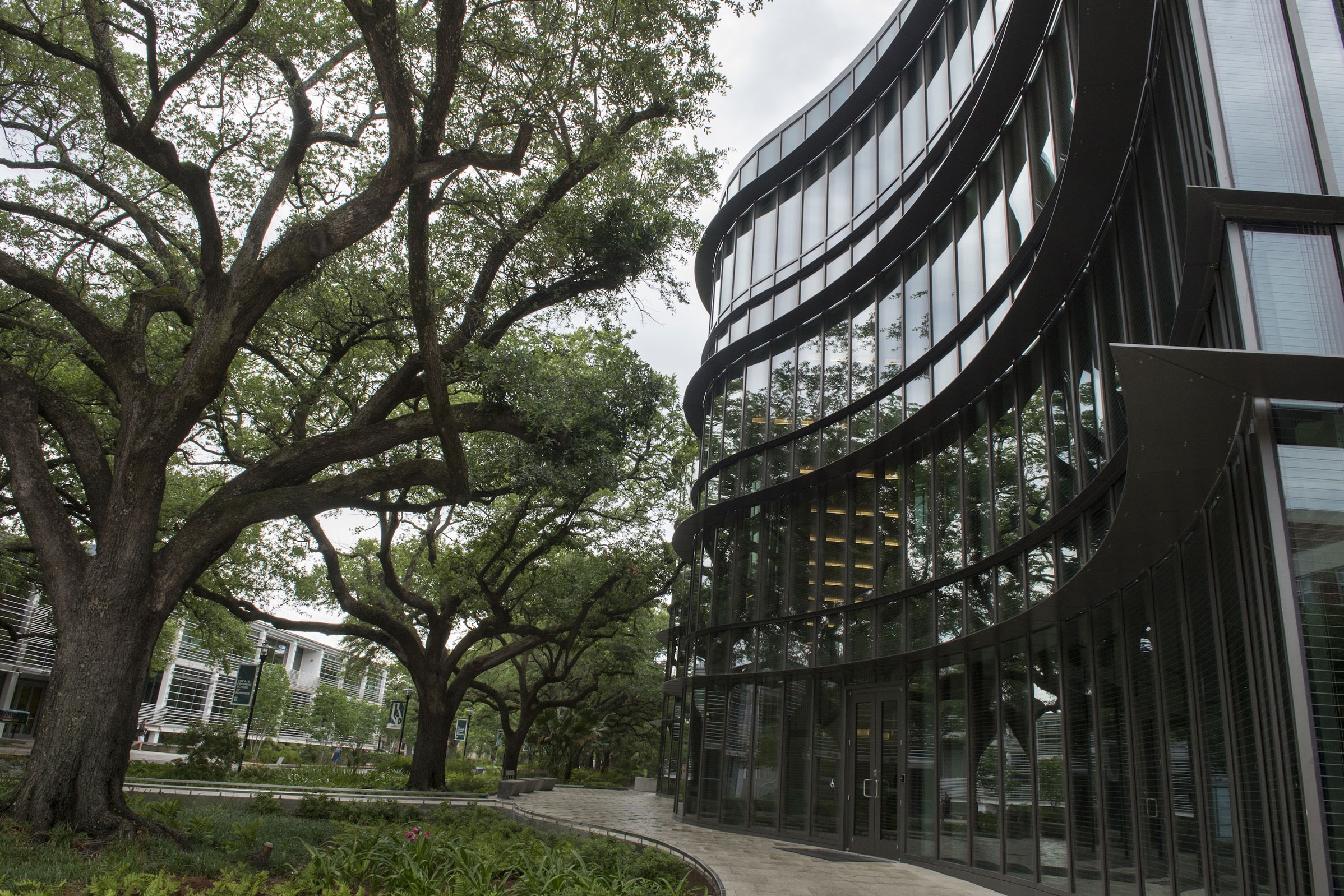Story at a glance:
- Aluminum is an increasingly energy-efficient building material.
- Using aluminum framing systems may help improve the energy performance of buildings.
- Aluminum can help keep other building materials out of landfills.
Today’s architects and designers are constantly looking for new sustainable building materials to make for longer lasting projects with the potential for LEED and other certifications. Some experts point to aluminum being used more and more in everything from windows to framing systems to ramps.
These are eight benefits of aluminum in construction.
1. Thermal Performance
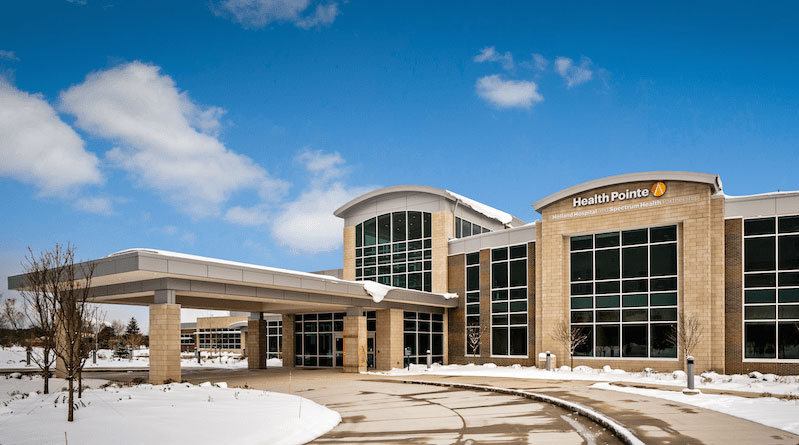
Aluminum framing systems by YKK. Photo courtesy of YKK AP
The benefits of aluminum are many, including the fact that it retains thermal energy. At one time, aluminum framing systems were known for their high thermal conductivity, or vulnerability to heat gain and loss.
Thermal enhancement technologies in aluminum framing systems significantly reduce heat loss during cold weather, yielding warmer interior surface temperatures on the frames, which helps to mitigate condensation, thereby increasing a building’s thermal performance.
According to YKK Ap’s Steve Schohan, a past contributor to gb&d, a framing system’s thermal performance is less effective when the aluminum that sits inside the conditioned space connects with the outside unconditioned material. Schohan said that, in cold climates, aluminum acts like an ice cube in a building, which requires more energy to control interior temperature. This makes the type of framing system, and the performance of that system, critical when considering the energy performance of a building.
“Thermal breaks in aluminum framing systems were first introduced to help solve the issue of high thermal conductivity nearly 35 years ago as part of the response to the energy crisis in the 1970s,” Schohan wrote for gb&d. “Today thermal break technology has become more advanced. Aluminum framing manufacturers often use one of two methods: pour and debridge or polyamide struts.”
2. Condensation Resistance
Condensation resistance is another of the benefits of aluminum. As Schohan has noted, thermal break technology has advanced to the point where reducing condensation allows aluminum frames to save energy and conserve temperature more efficiently.
He said YKK AP’s ThermaBond Plus improves the adhesion of the polyurethane material to the aluminum extrusion in the pour and debridge method. Another innovative example is YKK AP’s MegaTherm, which uses 6/6 nylon polyamide glass fiber reinforced isobars to join two extrusions into one thermally broken mullion. “These methods save energy and reduce condensation, delivering proven performance over the life of the building,” he said.
“Thermal enhancement technologies in aluminum framing systems significantly reduce heat loss during cold weather yielding warmer interior surface temperatures on the frames, which helps to mitigate condensation and thereby increasing a building’s thermal performance,” he wrote.
3. Sun Control
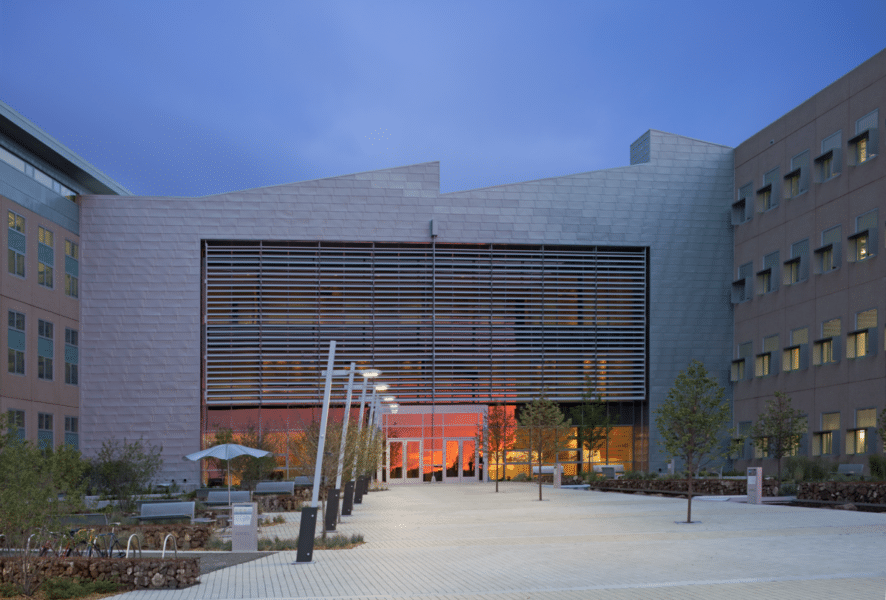
Architectural Grilles & Sunshade aluminum sunshades. Photo courtesy of AGS
Sunshades created with aluminum are designed to blend seamlessly within a framing system.
“They have become a preferred method for improving a building’s energy efficiency by reducing the solar heat gain coefficient (SHGC),” Schohan wrote. “Sunshades offer design versatility and can be customized depending on which way a building faces to reduce the amount of harmful light while bringing visible light in to achieve optimal daylighting and improve occupant comfort.”
Architectural Grilles & Sunshades (AGS) also prioritizes the use of aluminum in their sunshades to be 100% recyclable and eco-friendly.
4. LEED Points
Aluminum is not only durable; it can help architects and designers earn LEED points for projects. It’s another in a long list of the benefits of aluminum.
“Upgrading a building’s framing system with aluminum frames can be the most cost-effective option for exercising environmental intelligence, improving a building’s thermal performance, and gaining LEED Gold or Platinum certification,” Schohan said.
Because of aluminum’s fundamental properties, the nature of the extrusion process, and the structure of the North American extrusion industry, the use of aluminum extrusions in commercial buildings can contribute to LEED points.
5. Durability
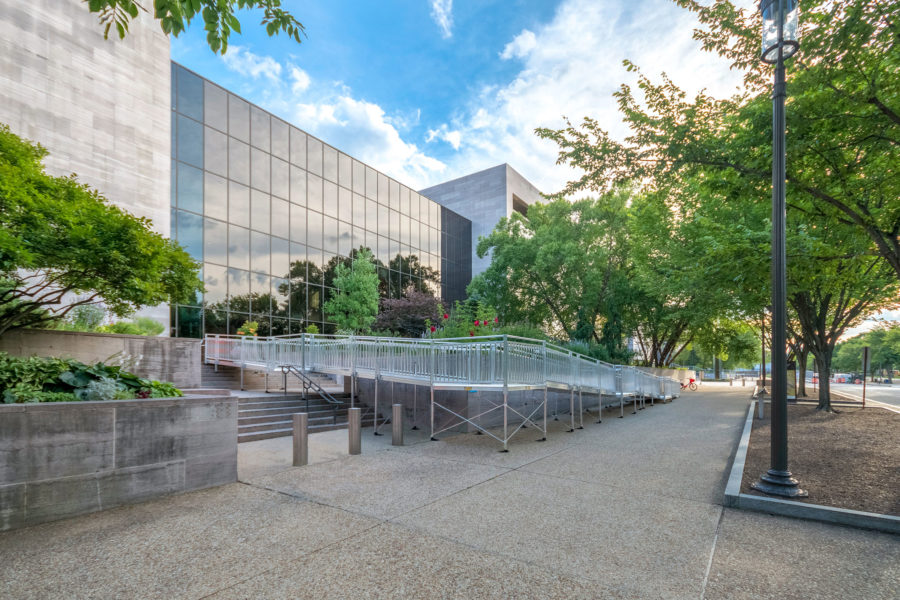
EZ-ACCESS Modular Access Systems have a permanent, slip-resistant surface and smooth, continuous handrails for safe traversing in all weather conditions. Photo courtesy of EZ-ACCESS
Durability is another of the benefits of aluminum, as it’s less susceptible to wear and rot than other materials. When used with a ramp system, aluminum proves to be especially efficient. Aluminum also does not warp over time, as compared to wooden ramps.
“An aging, misshapen ramp is both a tripping hazard and an impasse for individuals reliant on a mobility device like a wheelchair,” said Mike Johnson, national vice president of EZ-ACCESS, in a previous article for gb&d. “Our durable ramp systems are made of high-quality aluminum that is corrosion-resistant and ready for years of maintenance-free use.”
With aluminum ramp systems, the need for concrete footers or holes drilled into the site is eliminated from construction. Lightweight aluminum has been shown to last longer than other materials and won’t end up in a landfill.
Aluminum also doesn’t rust or rot, and the aluminum oxide that results from its natural aging process actually strengthens the material further. It truly is a no-maintenance solution.
6. Requires Little Maintenance
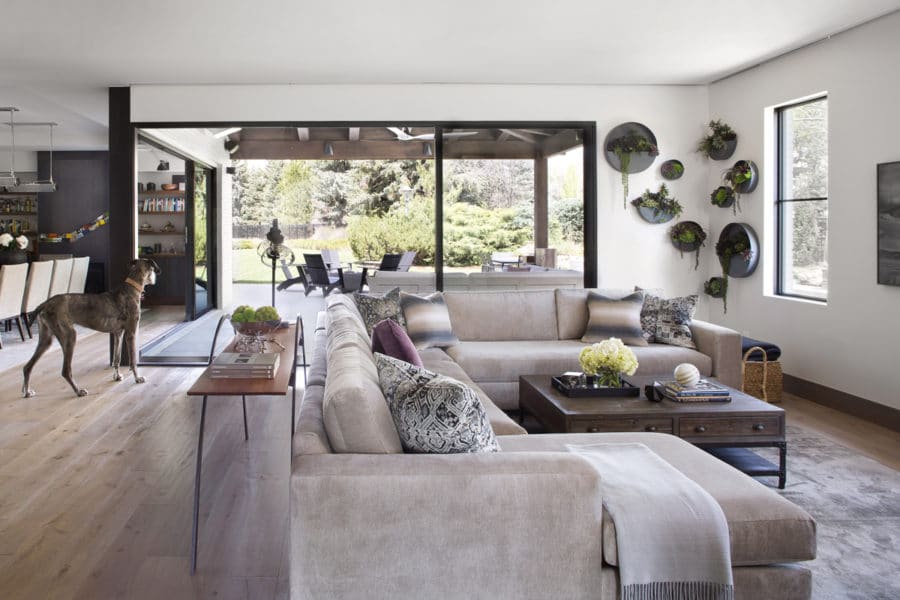
Western Window System’s aluminum frames. Photo courtesy of Western Window Systems
Because aluminum is so lightweight, the installation and construction of aluminum structures are also often less difficult than if you used other materials. During the installation process of aluminum stairs, for example, a permit is not needed since the metal poles used to hold the stairs are driven into the ground without a concrete base.
Without the need for pouring concrete, aluminum staircases are applicable to a variety of terrains. They are able to make even footing along hillsides and rocky exteriors.
“Generally aluminum requires very little maintenance, while wood has the potential to deteriorate without ongoing refinishing to the unclad surface,” said Ty Cranford in a previous submission to gb&d.
7. Low Environmental Impact
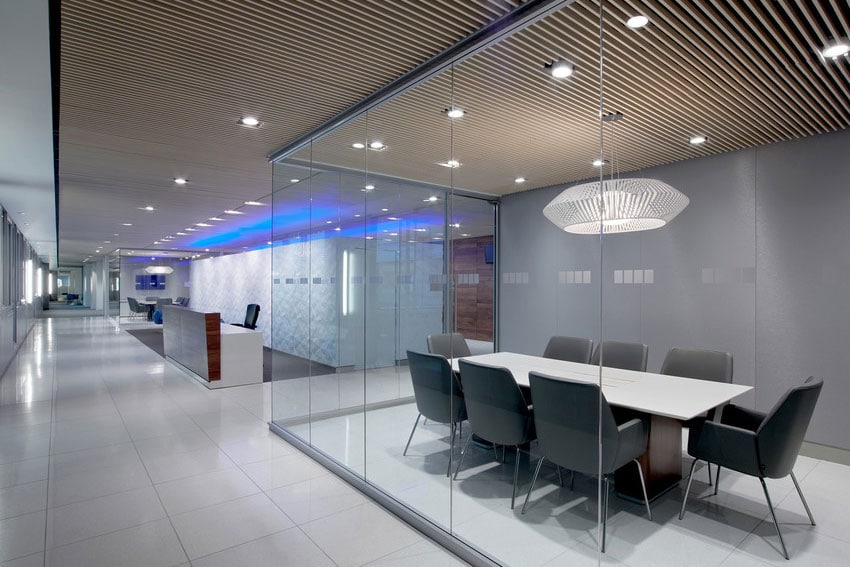
Demountable partitions made of aluminum and glass, like ONE by Transwall, are a sustainable alternative to traditional drywall. Photo courtesy of Transwall
When considering the environmental impact, aluminum is a great choice. By utilizing materials with a long life, one can drastically cut down on materials that go into landfills.
Aluminum is a long-lasting, durable material that doesn’t corrode over long periods of time. As aluminum deteriorates at a slower pace than other household materials, it will have to be replaced less often.
“It’s one of the most renewable materials out there,” Cranford said. “And it’s a very eco-responsible material when you need to replace it.”
8. Lightweight
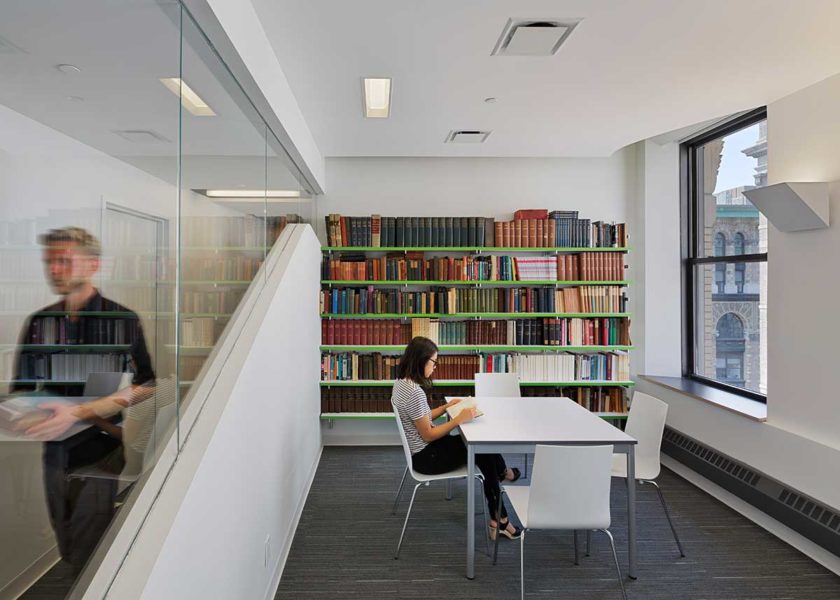
Aluminum shelving systems are lightweight and durable. Photo courtesy of Element Designs
Beyond being a major building material, aluminum can also be great for design inside architectural projects. Shelving systems, for instance, benefit from the use of aluminum as it is lightweight and stable.
Element Designs’ aluminum and glass shelving systems are lightweight, durable, and worth showing off, according to Beata Klecha, vice president of marketing at Element Designs. “It can be attached to a wall with the proper support, or it can be a standalone unit,” she said. “Shelving is a necessary storage solution, and the aesthetics are becoming more important, along with flexibility.”
Aluminum is an energy-efficient and environmentally friendly material to use for convenient shelving units.
Aluminum and glass have been popular in Europe for decades, but Klecha said that trend only started to arrive in the US more recently. “Element Designs was founded 15 years ago with the intention of bringing contemporary aluminum frame glass cabinet doors to the North American market,” she said. From there, the company saw a demand for high-quality shelving, unveiling °eluma LED shelving in 2007. °eluma’s aluminum frame with LED lighting was the first of its kind and won several awards. Today Element Designs offers everything from adjustable shelving systems to floating cube options.

